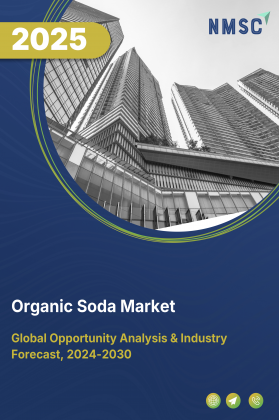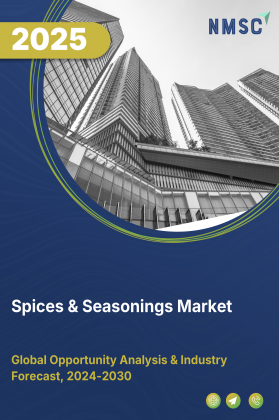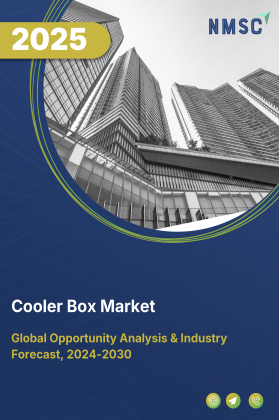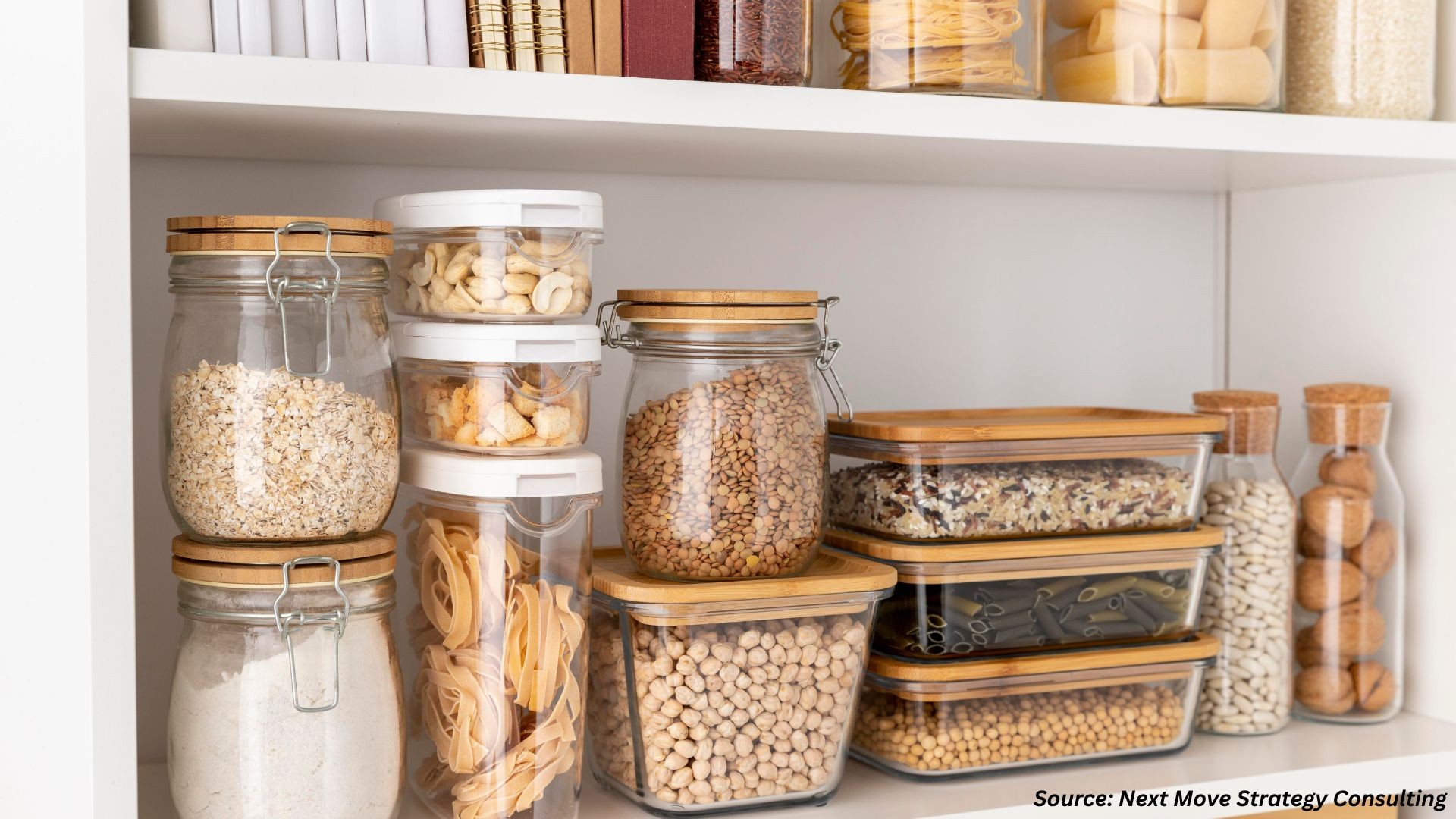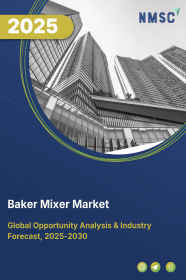
Baker Mixer Market by Type (Spiral Mixer and Planetary Mixer), by Application (Bakeries, Specialty Stores, Convenience Stores, and Supermarkets/Hypermarkets), by Distribution Channel (Online and Offline), and by End User (Commercial and Residential) — Global Opportunity Analysis and Industry Forecast, 2025–2030
Baker Mixer Market Report - Comprehensive Overview | |
| Study Period | 2020 - 2030 |
| Base Year for Estimation | 2024 |
| Forecast Data Period | 2026 - 2030 |
| Market Size in Base Year | 4.93 |
| Market Size in Forecast Year | 6.53 |
| Growth Rate 2026 - 2030 | 5.78% |
| Growth Factors | |
| Report Coverage | The report provides insights on market size, forecasts, emerging trends, competitive landscape, key segments, growth opportunities, recent developments, and strategic recommendations to help stakeholders make informed business decisions. |
| Segments Covered | Baker Mixer Market by Type (Spiral Mixer and Planetary Mixer), by Application (Bakeries, Specialty Stores, Convenience Stores, and Supermarkets/Hypermarkets), by Distribution Channel (Online and Offline), and by End User (Commercial and Residential) — |
| Countries Covered | 28 |
| Geographical Analysis | North America (The U.S., Canada, Mexico); Europe (The UK, Germany, France, Italy, Spain, Denmark, Netherlands, Finland, Sweden, Norway, Russia, Rest of Europe); Asia-Pacific (China, Japan, India, South Korea, Australia, Indonesia, Singapore, Taiwan, Thailand, Rest of Asia-Pacific) and RoW (Latin America, Middle East, Africa) |
| Companies Profiled | Top 10 companies |
| Competitive Landscape | |
| Market Share | Available for top 10 companies |
| Customization Scope | Free customization (equivalent to up to 80 working hours of analysts) after purchase. Addition or alteration to country, regional, and segment scope. |
| Purchase Option | Avail customized purchase options to meet your exact research needs. |
Market Definition
The global Baker Mixer Market size was valued at USD 4.61 billion in 2024 and is predicted to reach USD 6.53 billion by 2030 at a CAGR of 6.01% from 2025 to 2030. A baker mixer is the most efficient and multipurpose industrial and commercial equipment designed to prepare food, ceramic dough, and other products.
A baker mixer is typically used to produce various products such as bread, muffins, cakes, biscuits, and pizzas. It is used to replace manual labor with the help of a mechanical system that allows the continuous production of large dough in huge quantities. These are used to prepare various products such as bread, pizzas, biscuits, and muffins. Baker mixer is categorized into two main types, such as planetary mixers and spiral mixers. A planetary mixer has a non-rotating, fixed bowl, and it is used in the equipment that mixes the dough in the planet’s rotation direction.
Baker mixers are ideally used to produce pastry products such as batters, creams, emulsions, and sophisticated desserts. In contrast, the function of a spiral mixer is to mix bread dough to develop a gluten-like structure delicately. In addition, various attachments are available for these mixers, including a whip, dough hook, and paddle. The equipment of baker mixers can be customized for a wide range of commercial applications.
Market Dynamics and Trends
The demand for baker mixers has increased due to the rapidly growing interest in customized bakery products such as cakes, pastries, and cookies across the globe. Also, the high demand for bread and bread products, including breadstick and brown bread, along with the increase in consumer demand for packaged foods, such as pizza bread and biscuits, drive the market growth.
Moreover, the rapid emergence of bakery start-ups and the availability of financing and leasing alternatives to assist start-ups to purchase machinery are expected to further propel the market growth. For instance, in June 2022, Lady M, a New York-based bakery chain, announced seeking about 600 million USD in funds. Lady M is famous for its signature Mille Crepes cakes. The company is looking to raise about $20 million to expand in Asia.
However, the dearth of skilled labor to operate baker mixer machines could restrain the market growth during the forecast period. On the contrary, the advent of latest technologies, such as extrusion technology for processing a variety of dried and fresh pasta, cereals, and snacks, is expected to create ample growth opportunities for the market in the coming years.
Market Segmentations and Scope of the Study:
The baker mixer market is segmented based on type, application, distribution channel, end-user, and geography. On the basis of type, the market is divided into spiral mixers and planetary mixers. On the basis of application, the market is categorized into bakeries, specialty stores, convenience stores, and supermarkets/hypermarkets. On the basis of distribution channel, the market is segmented into online and offline. On the basis of end-user, the market is bifurcated into commercial and residential. The report contains the geographical breakdown and analysis of each of the abovementioned segments across four regions, namely North America, Europe, Asia-Pacific, and Rest of the World (RoW).
Geographical Analysis
Europe currently holds the lion share of the baker mixer market. It is expected to continue its dominance during the forecast period due to factors such as the growing consumption of bakery items as a staple food among Europeans. Also, growing awareness about healthy food eating habits such as gluten-free and whole-grain baked items further boosts the market growth in this region. For instance, in March 2022, Lantmännen introduced gluten-free wheat starch for producing gluten-free baked goods to counter the effects of celiac disease.
On the other hand, the market in the Asia-Pacific region is expected to proliferate due to the upsurge in food products like bakery and snack items among individuals, sedentary lifestyles, and innovative sales channels. For instance, in March 2022, Cybake bakery management software opened an office in Melbourne to offer its products to commercial bakeries across Australia. This software helps manage orders, invoicing, shop management, and deliveries. Also, growing preferences for portably packed baked items and growing demand for low-fat and gluten-free with innovative flavors are expected to drive the market growth in this region.
Competitive Landscape
The baker mixer market comprises various market players such as Bühler AG,Middleby Corporation,Hobart Corporation,Baker Perkins Limited,GEA Group Aktiengesellschaft,Globe Food Equipment Company,Robot Coupe,Ferneto, S.A.,Ali Group S.r.l. and BakeMax. These market players have adopted several strategies such as product launch across various regions to maintain their dominance in the market.
For instance, in June 2021, AMF Tromp announced the launch of an intelligent applicator solution for pizza products. It facilitates automated quality and quantity control for pizza toppings such as cheese. This AI-based solution enables pizza producers to minimize product wastage, reduce labor costs, and operate more efficiently. In addition, it accelerates manufacturing processes and improves the accuracy of the topping utility of using at least 3%.
Key Benefits
-
The global baker mixer market report provides a quantitative analysis of the current market and estimations from 2022 to 2030 that assists in identifying and capitalizing on the prevailing market opportunities.
-
The study comprises a deep dive analysis of the baker mixer market trend, including the current and future trends for depicting the prevalent investment pockets in the market.
-
The information related to key drivers, restraints, and opportunities and their impact on the baker mixer market is provided in the report.
-
The competitive analysis of the market players, along with their market shares, is included in the study.
-
The SWOT analysis and Porter’s Five Forces model are included in the study.
-
The report contains the value chain analysis of the market to provide a clear picture of the stakeholder roles.
Baker Mixer Market Key Segments
By Type
-
Spiral Mixer
-
Planetary Mixer
By Application
-
Bakeries
-
Specialty Stores
-
Convenience Stores
-
Supermarkets/Hypermarkets
By Distribution Channel
-
Online
-
Offline
By End User
-
Commercial
-
Residential
By Geography
-
North America
-
The U.S.
-
Canada
-
Mexico
-
-
Europe
-
U.K.
-
Germany
-
France
-
Italy
-
Spain
-
Rest of Europe
-
-
Asia-Pacific
-
China
-
India
-
Japan
-
South Korea
-
Australia
-
Rest of Asia-Pacific
-
-
RoW
-
UAE
-
Saudi Arabia
-
South Africa
-
Brazil
-
Remaining Countries
-
Key Players
-
Bühler AG
-
Middleby Corporation
-
Hobart Corporation
-
Baker Perkins Limited
-
GEA Group Aktiengesellschaft
-
Globe Food Equipment Company
-
Robot Coupe
-
Ferneto, S.A.
-
Ali Group S.r.l.
-
BakeMax




















 Speak to Our Analyst
Speak to Our Analyst



